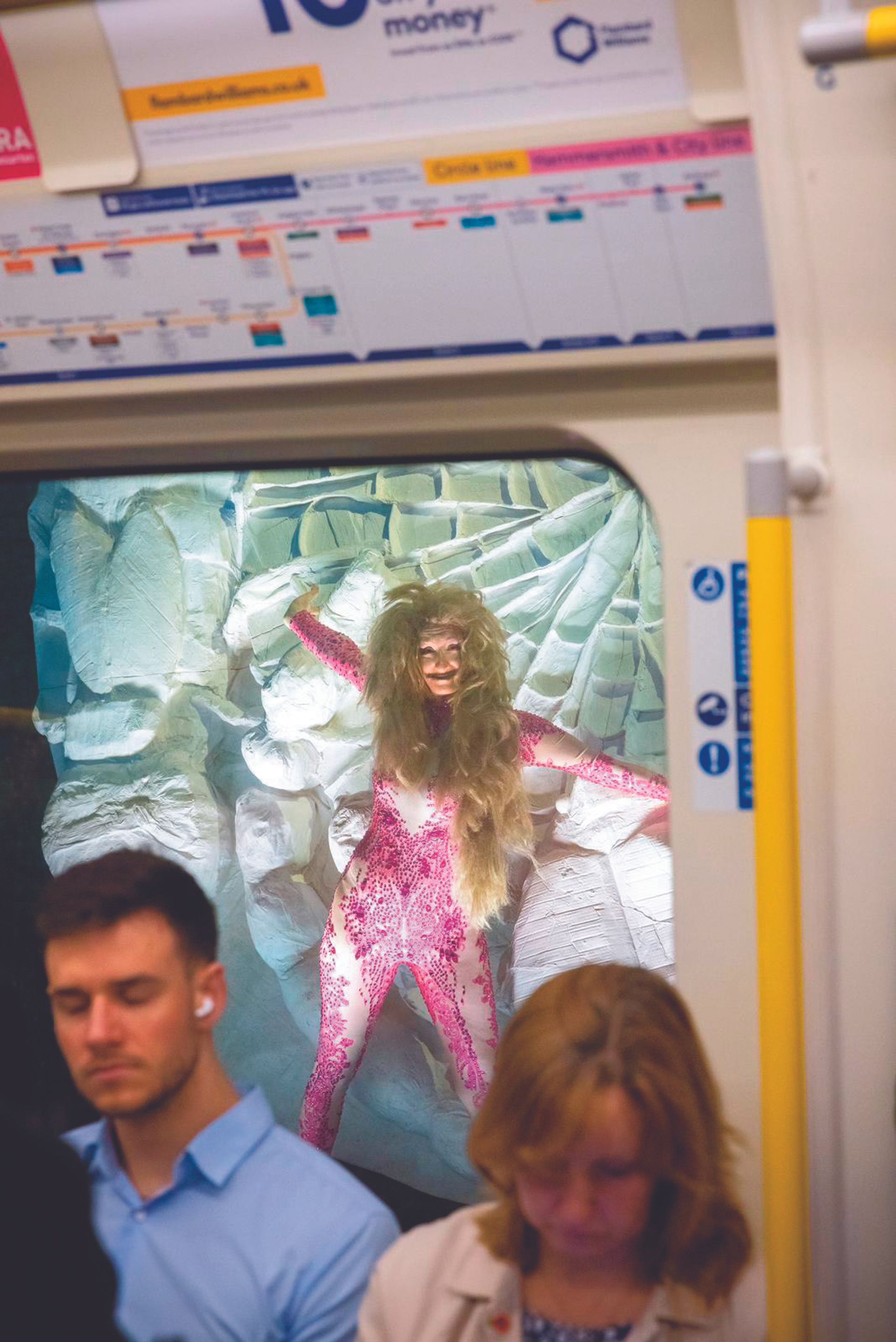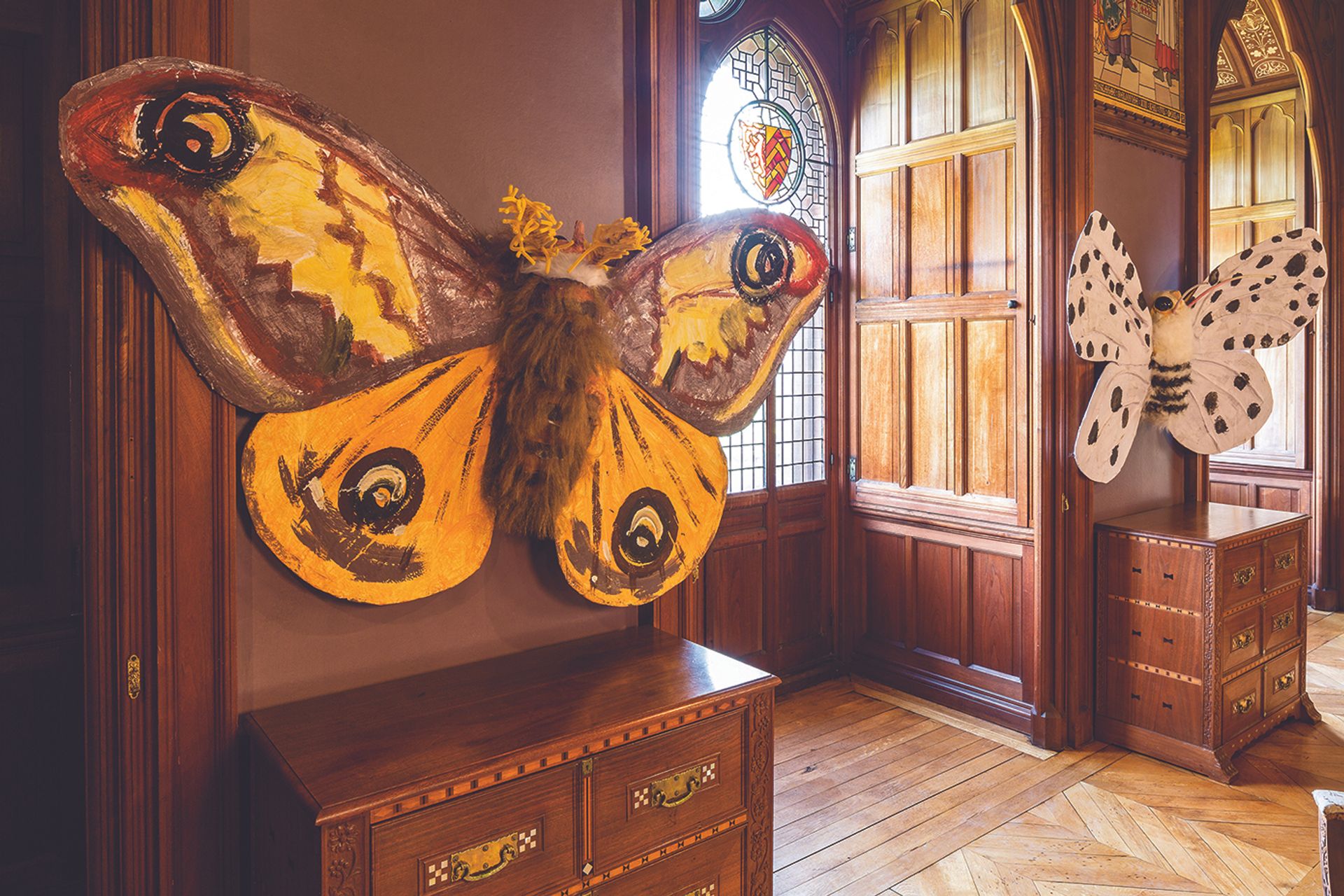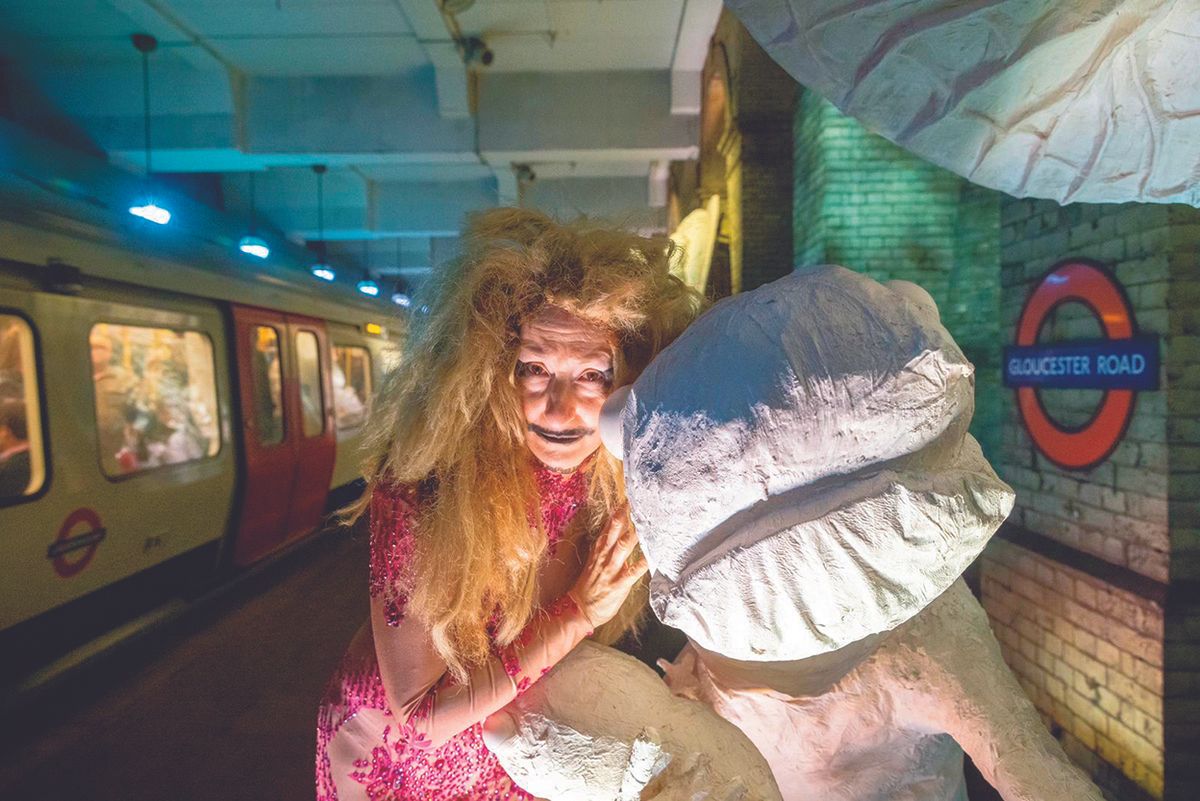“I am a very curious person, and I’m especially attracted to information that needs to be rehabilitated or celebrated,” says Monster Chetwynd, who unveils two amiably anarchic commissions in very different locations this summer, at London’s Gloucester Road Underground station and on Mount Stuart on the Scottish Island of Bute. Originally Alaila, then Spartacus, then Marvin Gaye and now Monster Chetwynd, the artist known for her idiosyncratic extravaganzas involving homemade costumes, wonky handmade props and fleets of participants.
These epic carnivalesque events draw on and mash up an eclectic but also often erudite range of sources that can range from Hieronymous Bosch and Rabelais to Meatloaf, Medieval mystery plays and Conan the Barbarian.
Although she was the first performance artist to be nominated for the Turner Prize, in 2012, Chetwynd’s practice spills into all media. Films, paintings, sculpture and installations frequently merge into each other, and in both London and Bute these multifarious activities are brought into play to demonstrate both Monster’s voracious appetite for research as well as what she describes as “radical fun”.

Monster Chetwynd at Gloucester Road, London
Photo: Benedict Johnson
Pond Life: Albertopolis and the Lily, takes a quirky route into colonialism, botany and engineering to explore the intermingled histories of Gloucester Road station and the vast programme of mid-19th century cultural and educational redevelopment instigated by Prince Albert following the Great Exhibition of 1851. The exhibition was housed in Joseph Paxton’s Crystal Palace, a wonder of the world that was visited by six million people. Proceeds from ticket sales helped construct the museums, monuments and educational establishments in what came to be nicknamed Albertopolis, just south of Hyde Park, which included the Natural History, Victoria and Albert and Science Museums as well as two train stations: South Kensington and Gloucester Road.
Chetwynd’s research also revealed that the gardener-engineer Paxton had already pioneered the construction of large glasshouses to house tropical plants gathered from across the globe by Victorian explorers, notably the giant Amazonian Victoria Regia water lily, whose massive circular leaves can grow up to 3m in diameter. “They have this incredible distribution of weight through their veins—Paxman famously stood his daughter on one,” says Chetwynd.
These giant lily pads also inspired Chetwynd to translate the story of Paxton and the lily into five plaster roundels, 4m in diameter, which for the next year will punctuate the length of Gloucester Road’s District Line platform. From a distance the works seem majestic and classical, like Renaissance tondos, but their surfaces seethe with reliefs of frogs, bugs and turtles, or, as Chetwynd puts it, “amphibian and underwater creatures admiring the inspiring structure of the lily”. At the head of these imposing works is a plaster sculpture of a giant salamander, holding a lily leaf aloft like a parasol.
Chetwynd has also made an accompanying film which plays in the ticketing hall and digs deeper into how the Victoria Regia lily (which was highly esteemed by the indigenous Tupi-Guarani people before receiving its royal moniker) Crystal Palace and Gloucester Road station are all inextricably entwined with histories of Colonialism. ‘Who Named the Lily’ features Chetwynd in the persona of ‘Fact Hungry Witch’ who, dressed in a sparkly pink bodysuit and a bushy blonde wig travels via tube and broom to investigate colonialism, the history of the Amazonian lily and the nature of truth. She sees the film as “ the biography of the lily rather than Paxton or dead white men, adding that,“you don’t have to assume authority comes from a certain place – you can be asking just as valid questions if you are wearing a leotard.”

Monster Chetwynd's Moths at Mount Stuart House and Gardens, Isle of Bute
© Keith Hunter Photography
Chetwynd describes herself as “definitely political covert rather than political overt” and at Mount Stuart she turns her research and radical fun to issues of environmentalism filtered through the mundane and often maligned moth. Upon arriving at Mount Stuart’s vast Victorian pile, built by the third Marquess of Bute, she was initially daunted by this “rich fruitcake of history”. But when she spotted that a moth count was taking place by local researchers, she had found her subject in what she saw as a “neglected nocturnal creature which people don’t bother to learn about”. “Moths are phenomenal, they are so unknown and yet have thousands of species—so I decided I’d like to work with them,” she says.
To this end, she has installed enormous cardboard, fabric and latex sculptures of “glamorous, gorgeous moths” in Mount Stuart’s bedrooms, along with a series of exquisite little Bat Opera oil paintings. More moth replicas and alien-like pupae costumes hang in the crypt and a nearby film shows them in action, worn by local schoolchildren, Mount Stuart staff and performers in a playful parade through the house and grounds.
Making the film inspired a live performance on the opening weekend, which involved more communal cavorting as well as presentations from the local moth experts who had inspired the piece in the first place. As this most inclusive of artists states, “I’m very driven to make things happen. But although I work towards joy and frivolity, at the same time I’m not just paying lip service with the radical fun. Hopefully, I can deepen a wedge and make people think, while also boosting morale.”
• Monster Chetwynd: Pond Life Albertopolis and the Lily, Gloucester Road Underground station, until May 2024
• Monster Chetwynd: Moths, Mount Stuart House and Gardens, Isle of Bute, until 20 August


